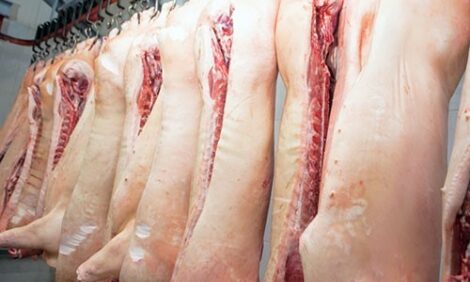



Hedging Health Risks on Farm
ANALYSIS - Farmers and livestock producers are using the markets more and more to hedge their costs and reduce their financial risk, writes Chris Harris.
By entering the cattle and pig futures markets, producers are mitigating the risk of volatile markets.
And by using the corn, grain and soy futures markets producers can help to mitigate the effects of fluctuations in cost - particularly high feed costs.
However, when it comes to the question of the heath of livestock, often little is done to pre-empt disease outbreaks or reduce the dangers of the spread of epidemics other than through good management and work practices.
Now, with advances in gene technology and testing, producers can monitor diseases and maintain surveillance for the spread of disease and take preventative measures.
Through using new diagnostic techniques using techniques such as real time PCR (polymerase chain reaction), producers can help to ensure that livestock is disease free when it is purchased or moved.
"Real time PCR has made large-scale detection feasible," said vet Dr Kees van Maanen at a recent seminar on Advances in Diagnostics in Brussels.
"PCR is like searching for a needle in a haystack and then making a haystack out of the needles."
The testing and diagnostic methods using real time PCR can help to detect diseases such as PRRS in pigs or ensuring that cattle are BVD free when they are bought at market or moved from one farm to another helping to reduce the possibility of spreading the disease.
The present methods of prevention of the spread of diseases such as PRRS and Bed have been through mass vaccination of herds.
However, by using diagnostic testing vaccination can be more targeted and is less invasive on the animals as well as helping to keep veterinary costs down.
Animals can also be screened by taking samples in ways that do not traumatise them such as saliva samples from pigs in the pens chewing on ropes. Such screening will allow farmers to discover the health status of a herd or batch of animals.
"Technology is taking over. Laboratory diagnosis used to be 99 per cent labour and one per cent technology. Nowadays the emphasis if the other way round," Dr Willie Loeffen, president of the European Association of Veterinary Laboratory Diagnosticians told the Advances in Diagnostics seminar sponsored by Life Technologies.
Advances in technology and research have now managed to reduce the time that action can be taken to fight disease epidemics and reduce the risk of the spread of disease across the farming community.
Dr Loeffen said that it took four years for scientists to characteristics the cause of PRRS in pigs but when Schmallenberg virus struck in cattle recently in Europe sequencing technology reduced the time scale for identification of the characteristics to just a few months.
"Technological developments mean that diagnosticians now do things that they could only dream about 10 or 20 years ago," said Dr Loeffen.
The use of diagnostics gives a targeted approach to treatment, which means that the veterinarian does not need to use a broad spectrum of drugs to prevent the risk of the spread of a disease.
"Veterinarians now have access to a wider range of better diagnostics than ever before. Tests are now faster, more accurate and more precise," said Dr Kirk Adams the Director of Product Management from Life Technologies.
"The next 20 years could see the biggest change in the way we manage production animals in over a hundred years."
However, while there have been great advances in technology, to ensure that the greatest benefits are seen, there also needs to be greater international cooperation.
"Pathogens and insects do not respect borders," said Dr van Maanen.
"Trusting each other's results requires further harmonisation and transparency for diagnostic procedures between laboratories and countries."
He added: "Rapid and accurate diagnostics contributes to disease management, but it does not stop epidemics.
"However, it has contributed significantly to gaining insight into the epidemiology of emerging disease and formulating appropriate measures."
Part of the move to more cooperation is the spread of information among vets and farmers on developments in technology and in the knowledge of disease outbreak and ensuring the farmer is willing to use the techniques to reduce the risk to animals on the farm.
Further ReadingFind out more information on PRRS by clicking here. |
For more information about swine diagnostics, click here or connect to the Thermo Fisher Scientific Swine Resource Center.








